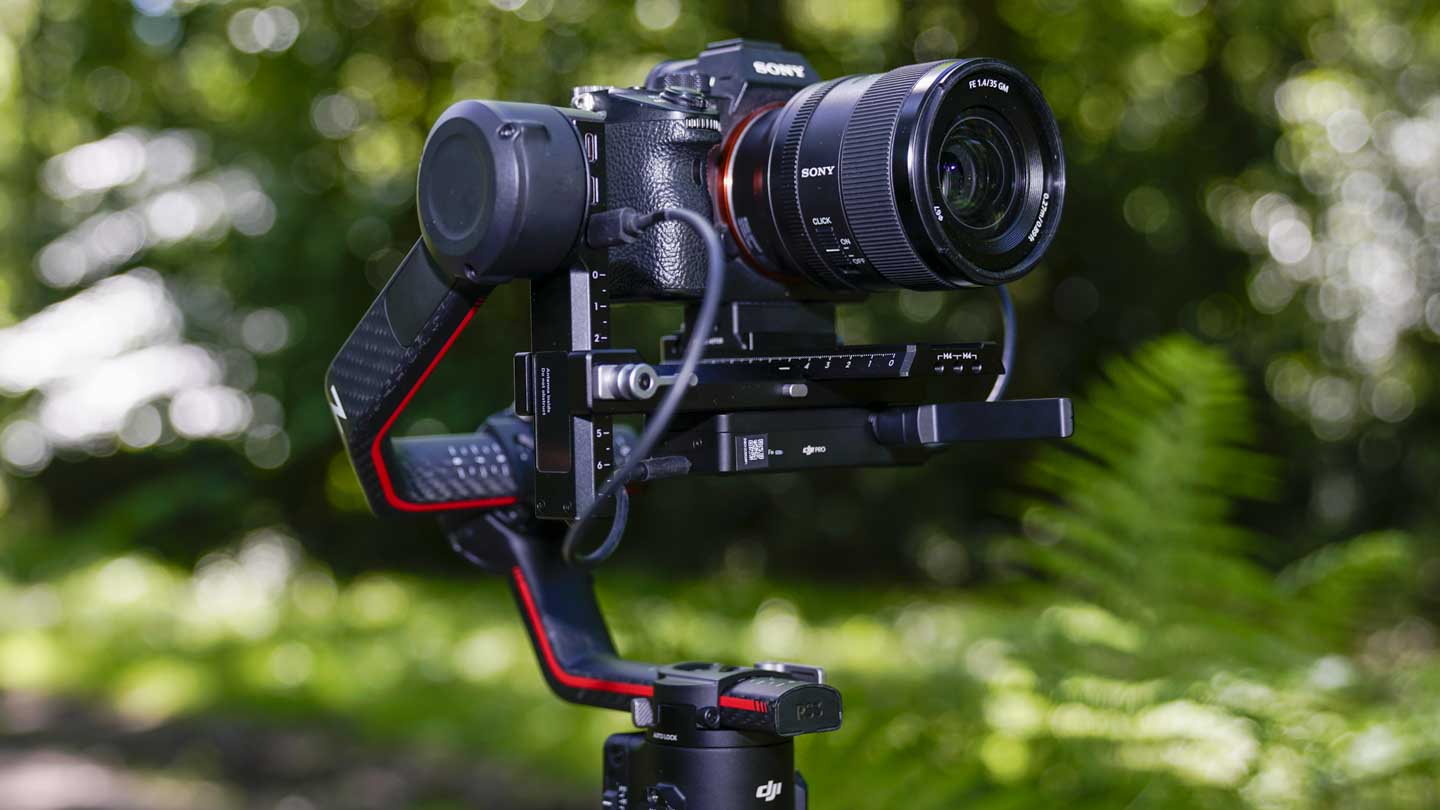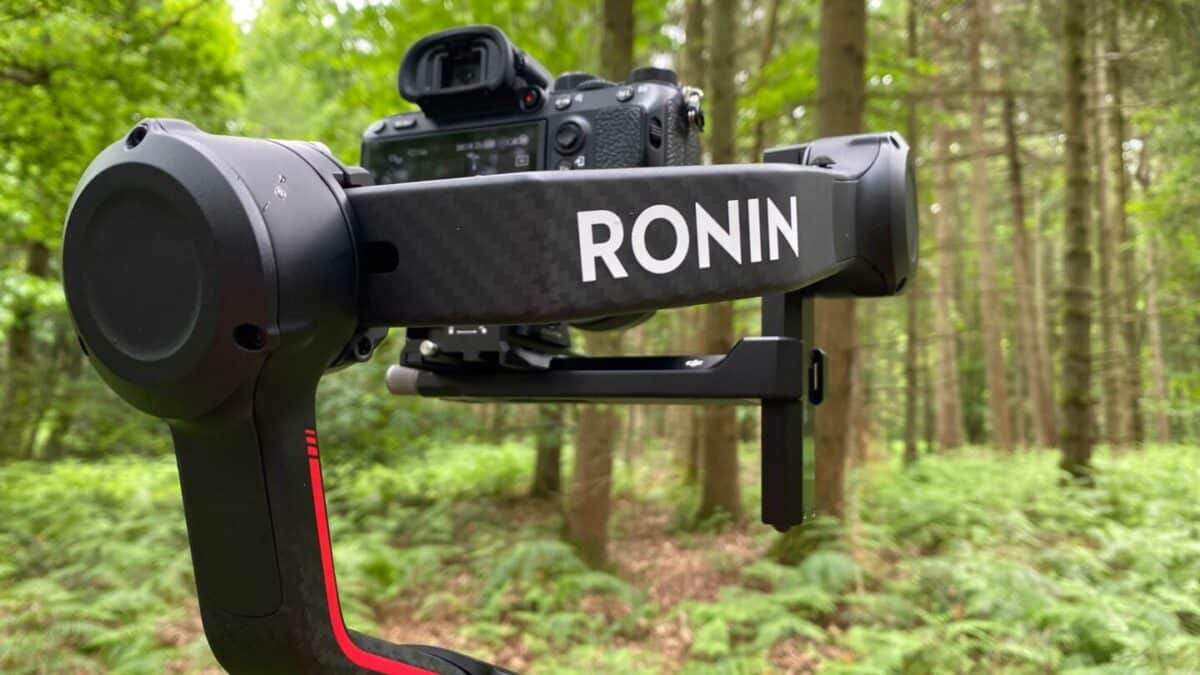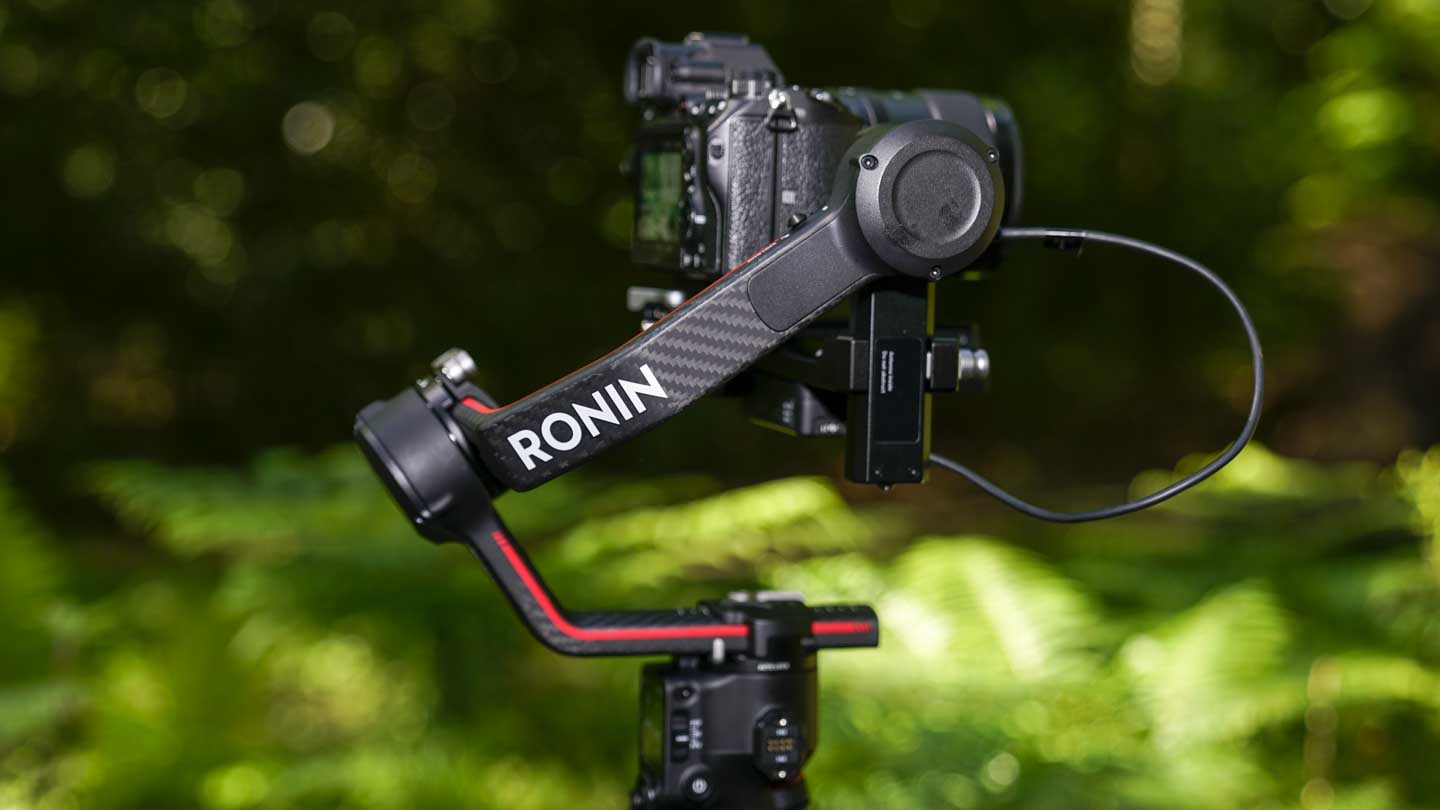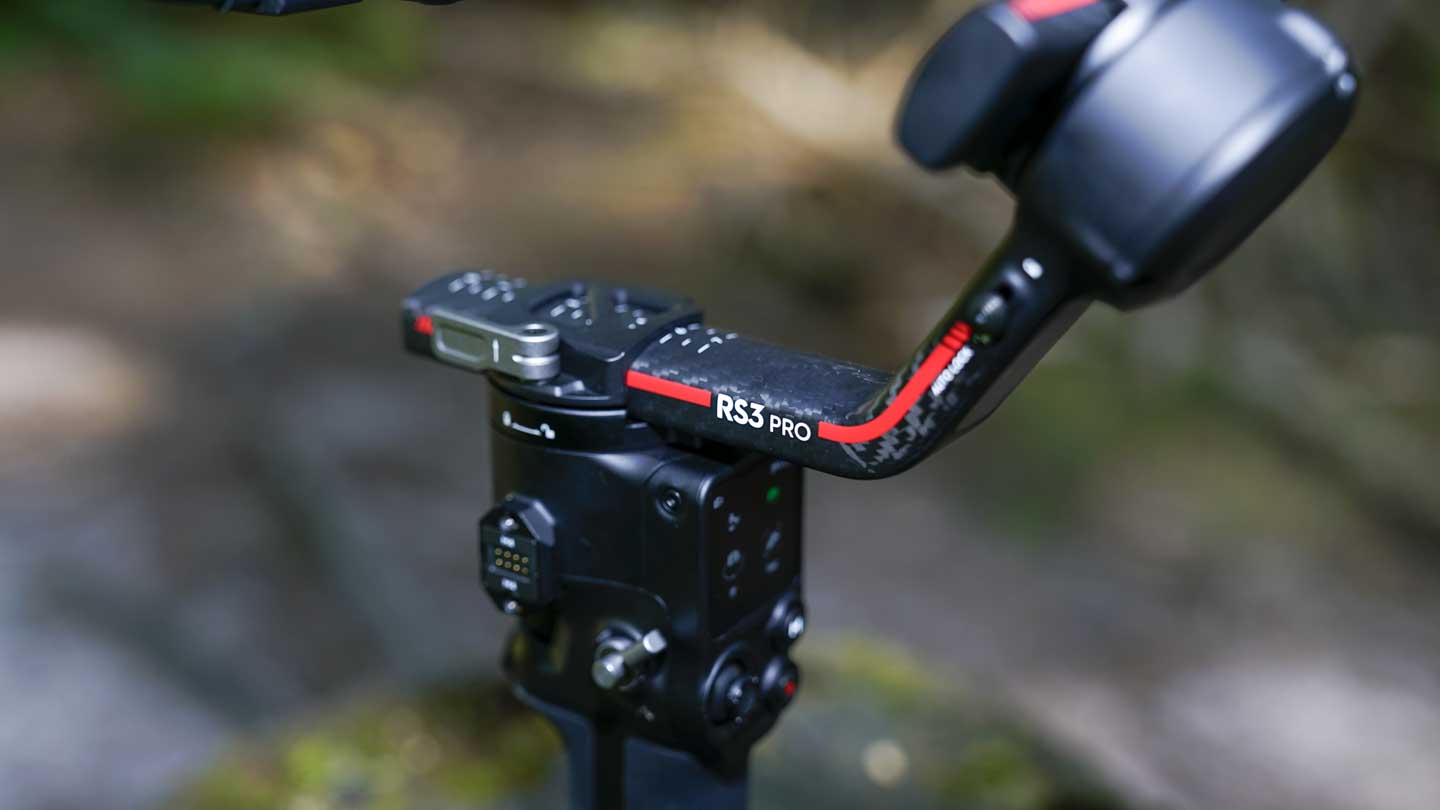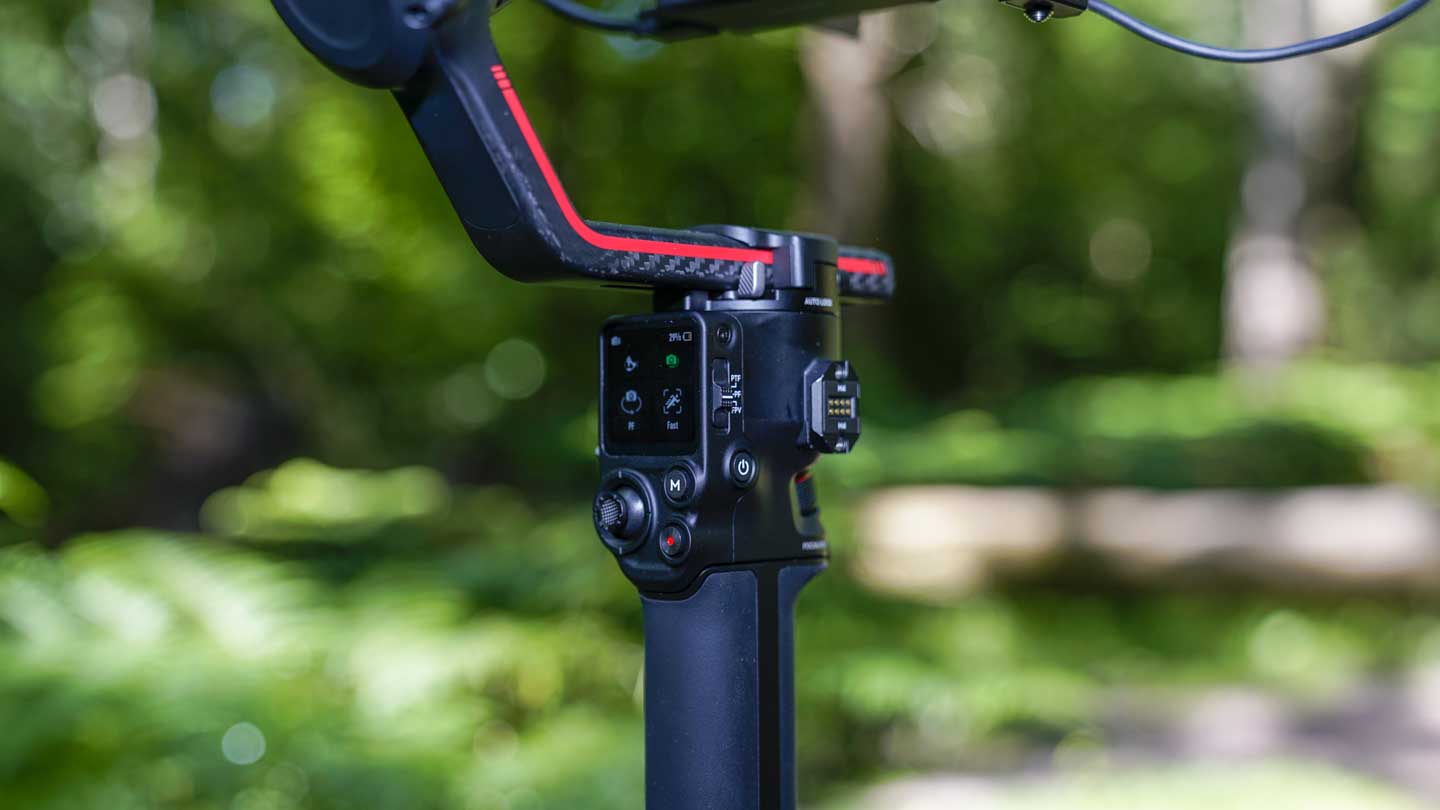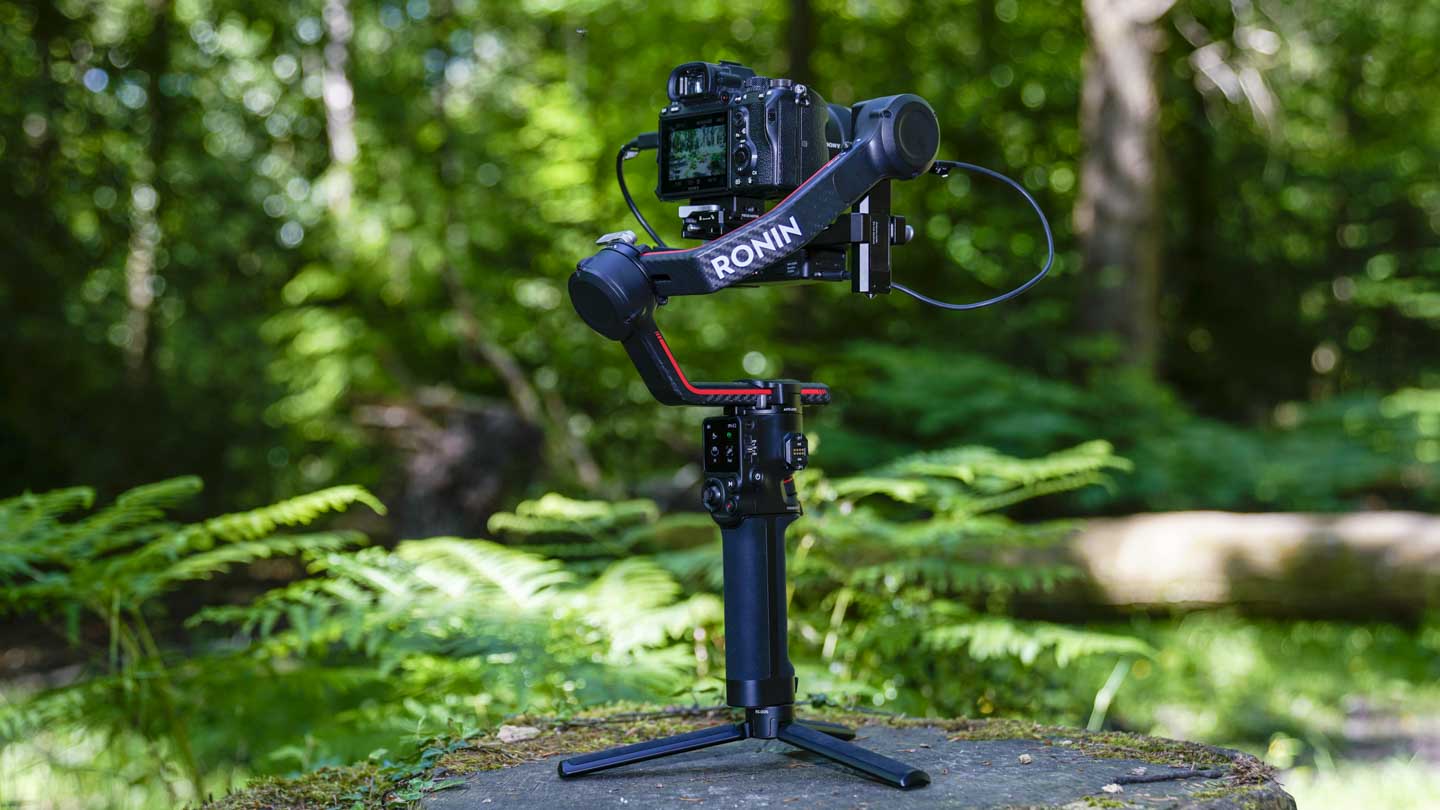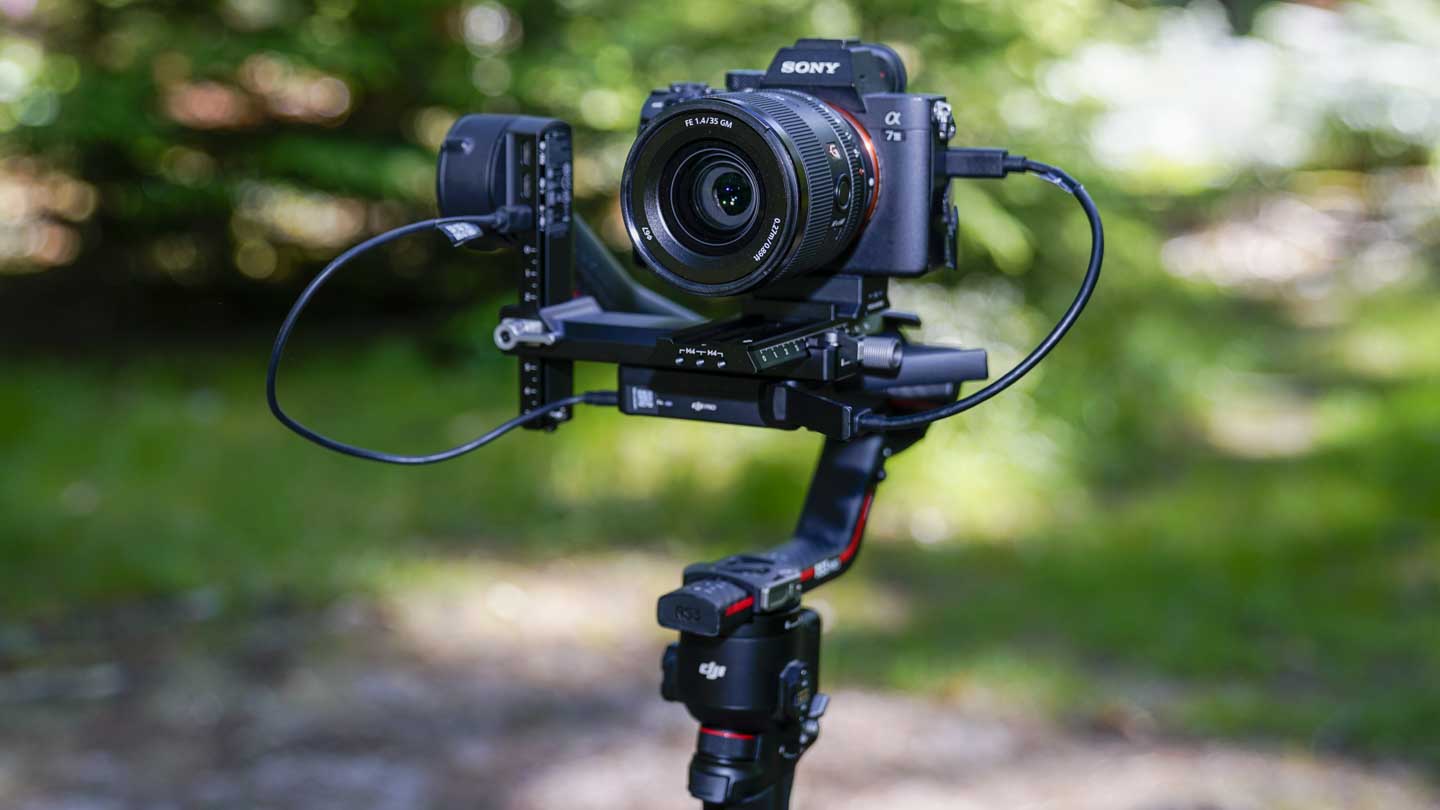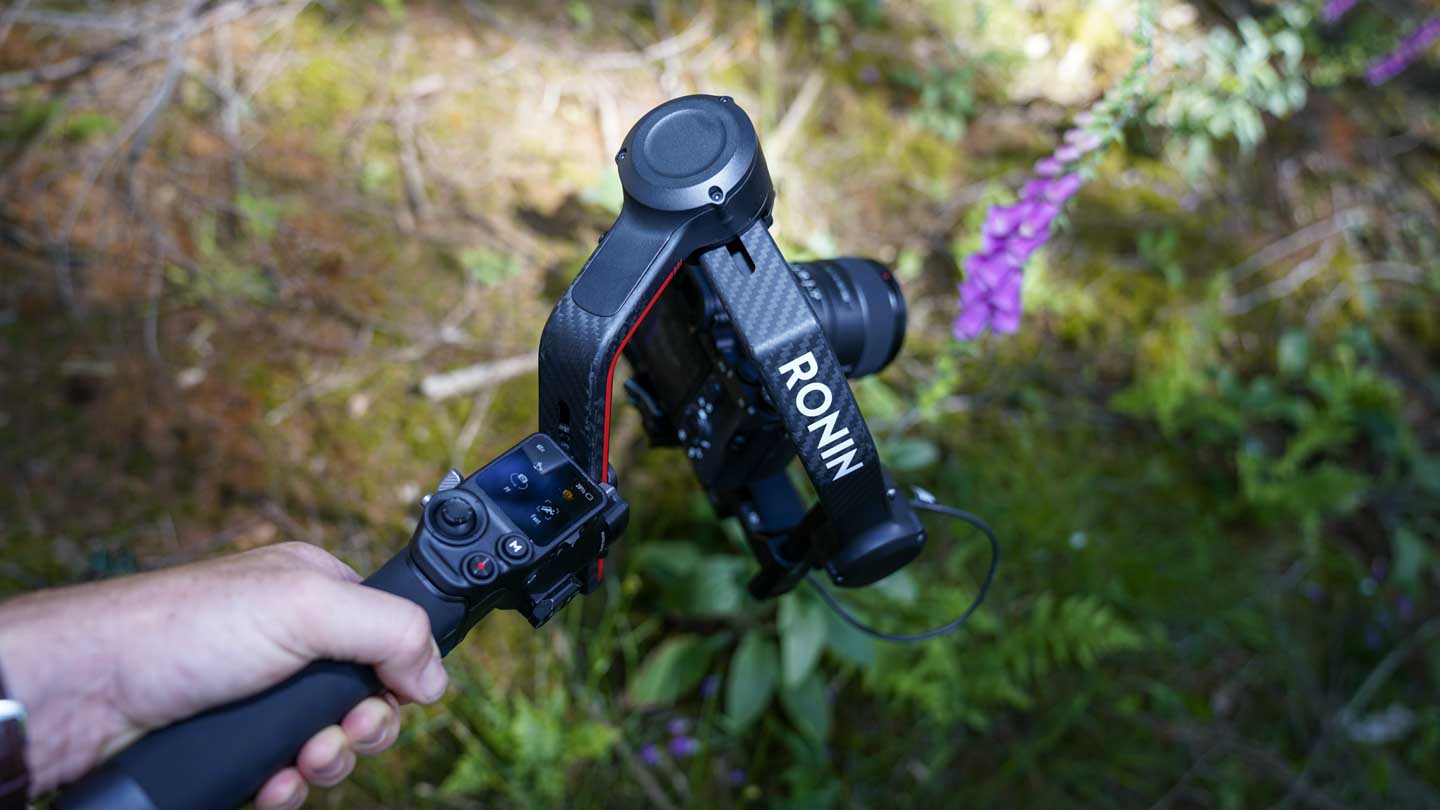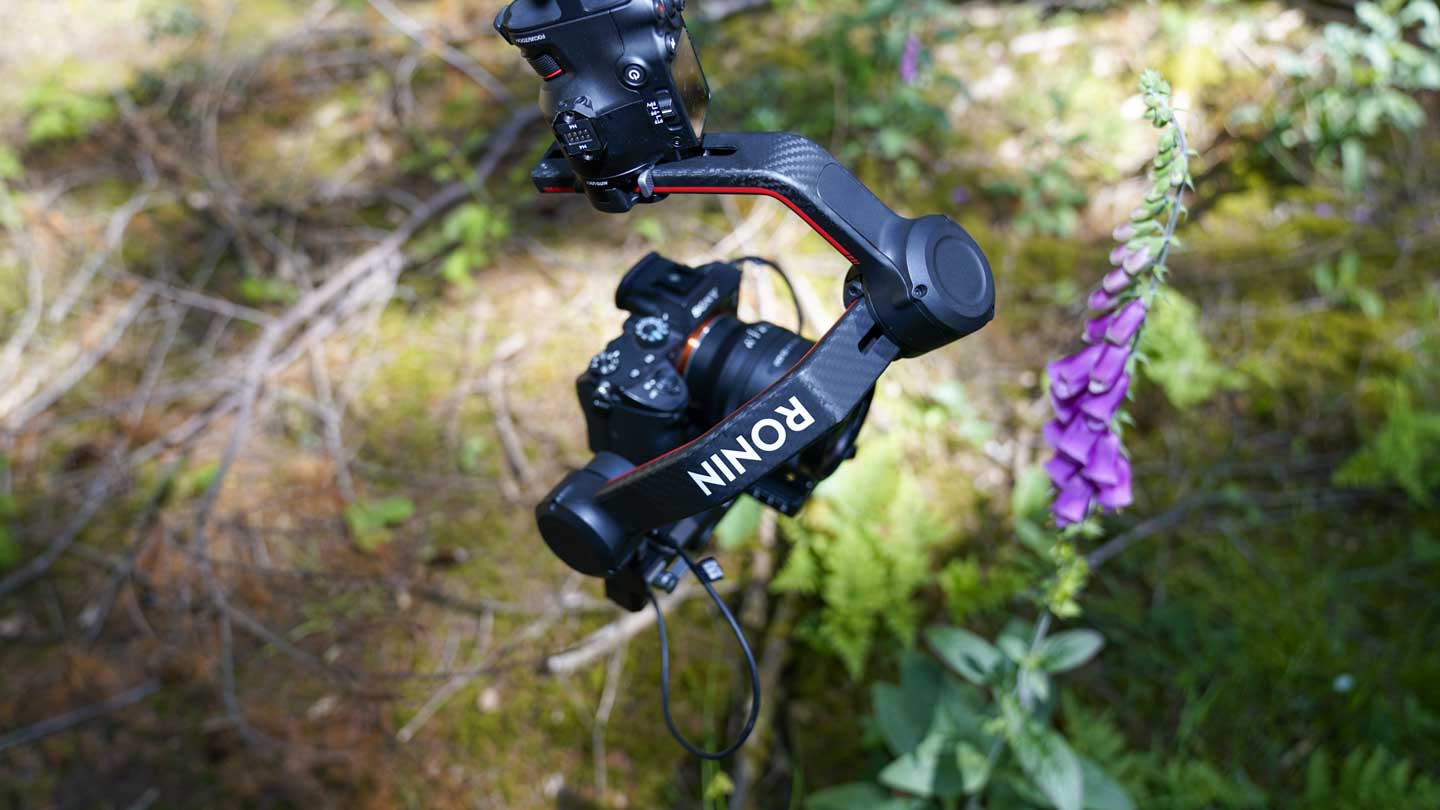There are many levels to the DJI Ronin RS3, firstly as a straight single-handed gimbal stabiliser and then as part of the larger Ronin eco-system. I’ll look at each of those components; Focus Motor, Rave Eye, and High Bright Monitor in separate reviews.
I’ll start by looking at the Ronin RS3 Pro in isolation, just the bare-bones gimbal, and it’s instantly apparent that it is an improvement over the DJI RS2. First and foremost, when mounting the camera, the process is easier due to several factors, the locks and their position, the new base plate and quick release mechanism and the longer arms that give more space.
As with the RS2, when setting up, you have to unlock the axis to spin the arms into position before relocking and mounting the camera.
Then you run through the usual set-up process of unlocking each axis and shifting the arm position until the balance is reached. However, while there is still some initial resistance as you move the arms, there’s more arm’s length to play with. The camera base plate also features a ratchet that enables more accurate position adjustment. After the manual calibration has been completed, you can select auto-calibration from the menu to finish the process.
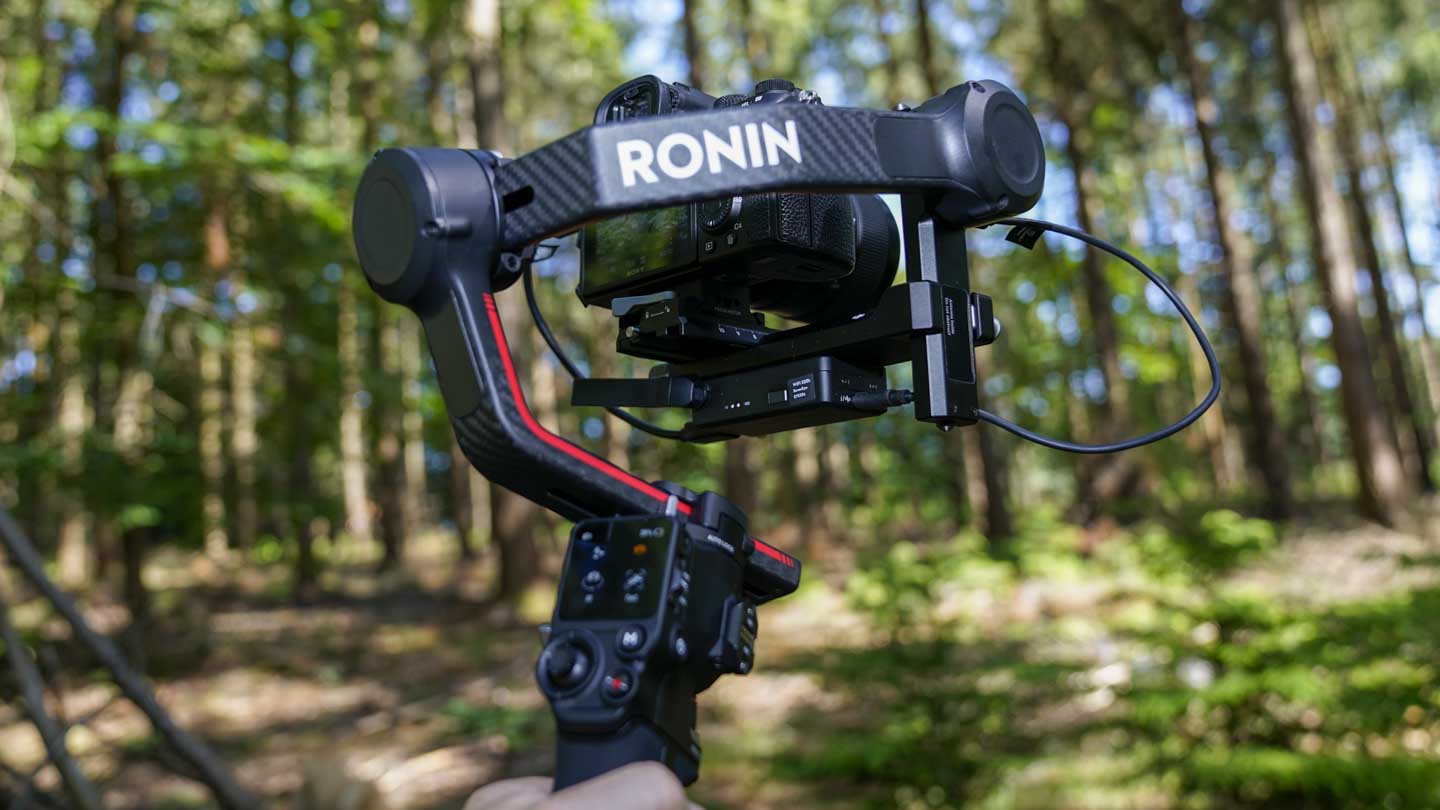
Once the camera balance has been found, a cable can be plugged into the camera’s USB-C port and directly into the side of the gimbal. The shutter can easily be activated from the direct control button on the grip.
In use, the DJI RS3 demonstrates the power of the motors inside. Firstly there is no noise; these motors are eerily silent. Once connected to the App, a huge amount of adjustability can be made to the balance and control settings.
The camera’s OLED is clear and used as a straightforward gimbal, with the camera mounted high above the rear arm. Even dropping the camera down to ground level, there’s enough arm clearance to pull out the screen so you can see what’s happening. The only time seeing the screen becomes difficult is when using the 3D Roll 360.
Back to the power of the motors and for walking, the standard settings are more than enough to keep up with the action. Increase the motor speed, and the response time picks up. However, the adjustments in camera position aren’t jerky; the gimbal buffers the direction change smoothly as the camera’s position changes.
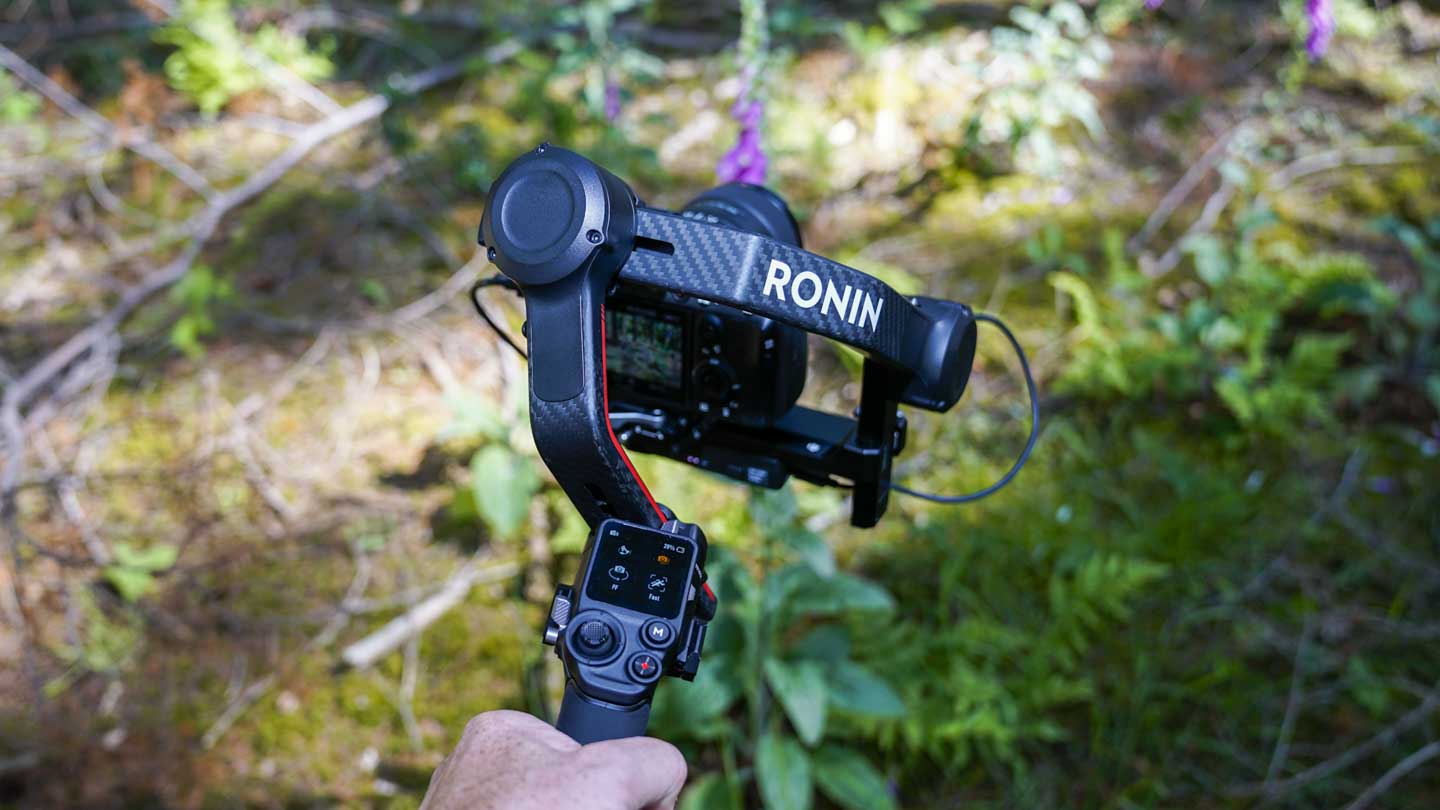
Picking up the speed and using the gimbal when running, again, the gimbal is more than able to cope with the relatively slow speed of my downhill run; the power of the motors holds the jilting movement well, keeping the camera balanced and footage surprisingly smooth.
Switching modes on the new DJI Ronin RS3 has also been made far easier, and the inclusion of the physical button on the right side of the grip enables you to switch from Pan Follow (PF) to Pan quickly, Tilt Follow and FPV, where all axes can move.
Dip into the menu screen, and it’s only a quick tap or two to other modes and features such as the 3D Roll 360, portrait etc.
Using the App opens up some of the more advanced features; these are generally accessible through the grip but easier to understand through the larger interface of your mobile screen.
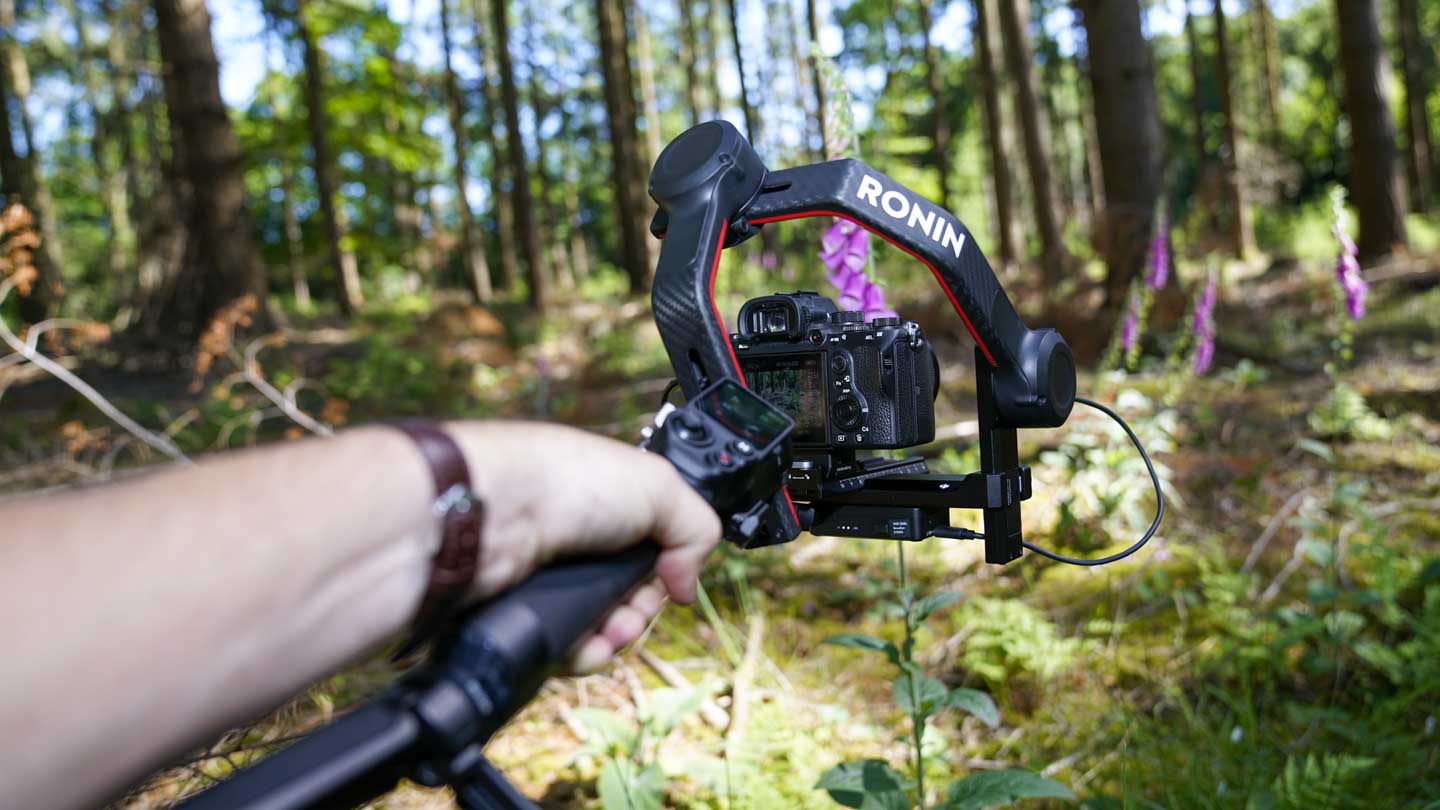
Imaging modes such as panoramic and timelapse, along with a few others, can be accessed and, with the automatic shutter release, are all simple enough to use, with the App taking control of most of the difficult features.
The performance of the Ronin RS3 Pro in isolation is excellent. Other manufacturers don’t, as yet, match the build quality; the fact that it will equally easily balance a Sony A7 III or Sony FX6 without issue means plenty of scope for all levels.
While there is no doubt that the Ronin RS3 Pro is an amazing gimbal in all respects, it is not the most comfortable to use. To make the Ronin RS3 as inclusive as possible, the joystick is mounted on the back of the grip so that the screen, buttons, and joystick directly face you. The joystick is positioned slightly over to the right, but this is far from the comfort of the Xhiyun WeeBill 3.
Then there’s the weight; once loaded, the Ronin RS3 Pro, while small, isn’t as lightweight as some of its competition. Attaching the optional side arm does help to add to the comfort, but again compared to the wrist supports and grip design of some other gimbals, the RS3 isn’t quite there.
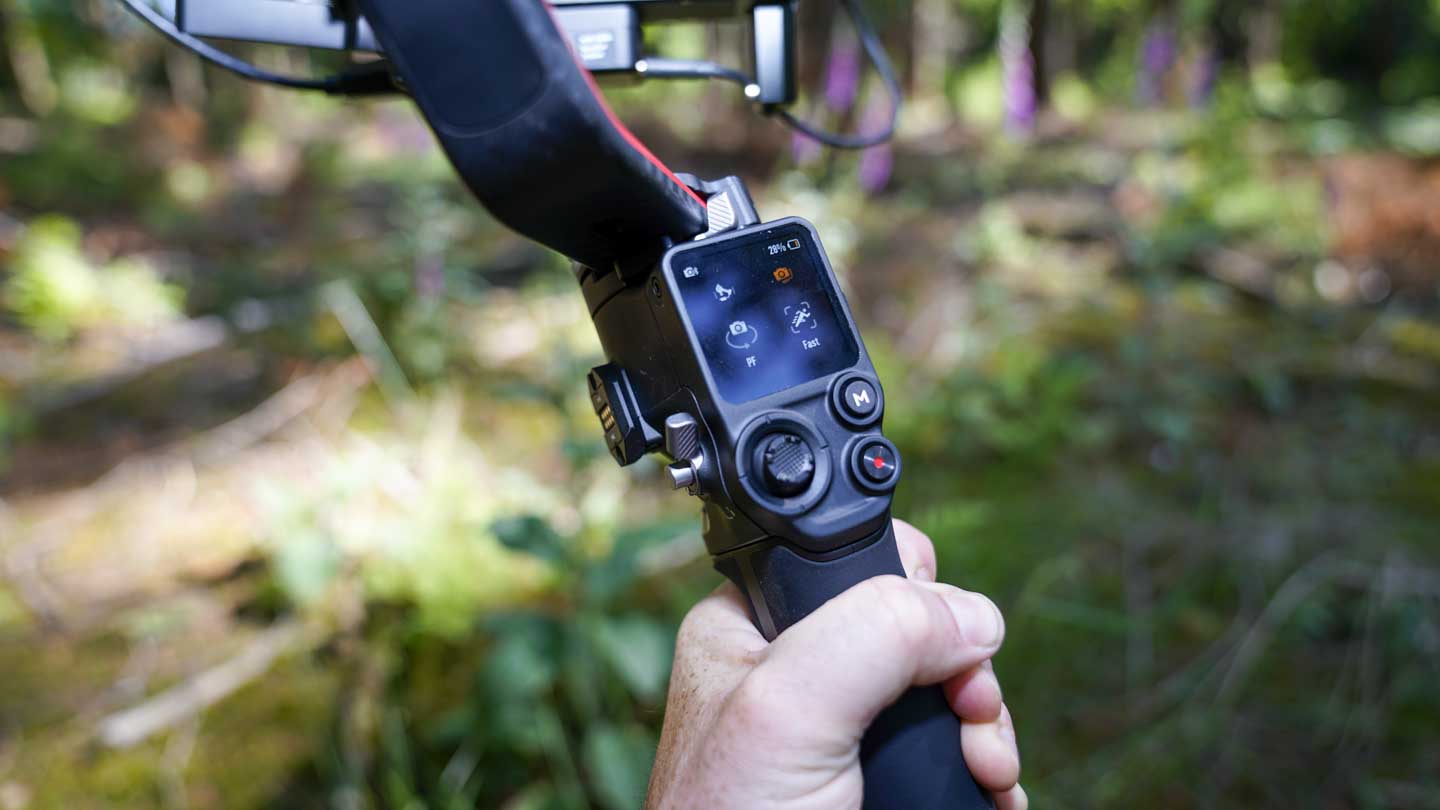
Ultimately in isolation, the DJI Ronin RS3 Pro is an excellent gimbal stabiliser with so much potential, especially once you add the Focus motor, Raven Eye or High Bright control monitor, which I will look at in a separate review.
Once the Focus motor and Raven Eye are added to the mix, the already excellent RS3 Pro takes another leap in function and features.
